Choir Stalls Help Page
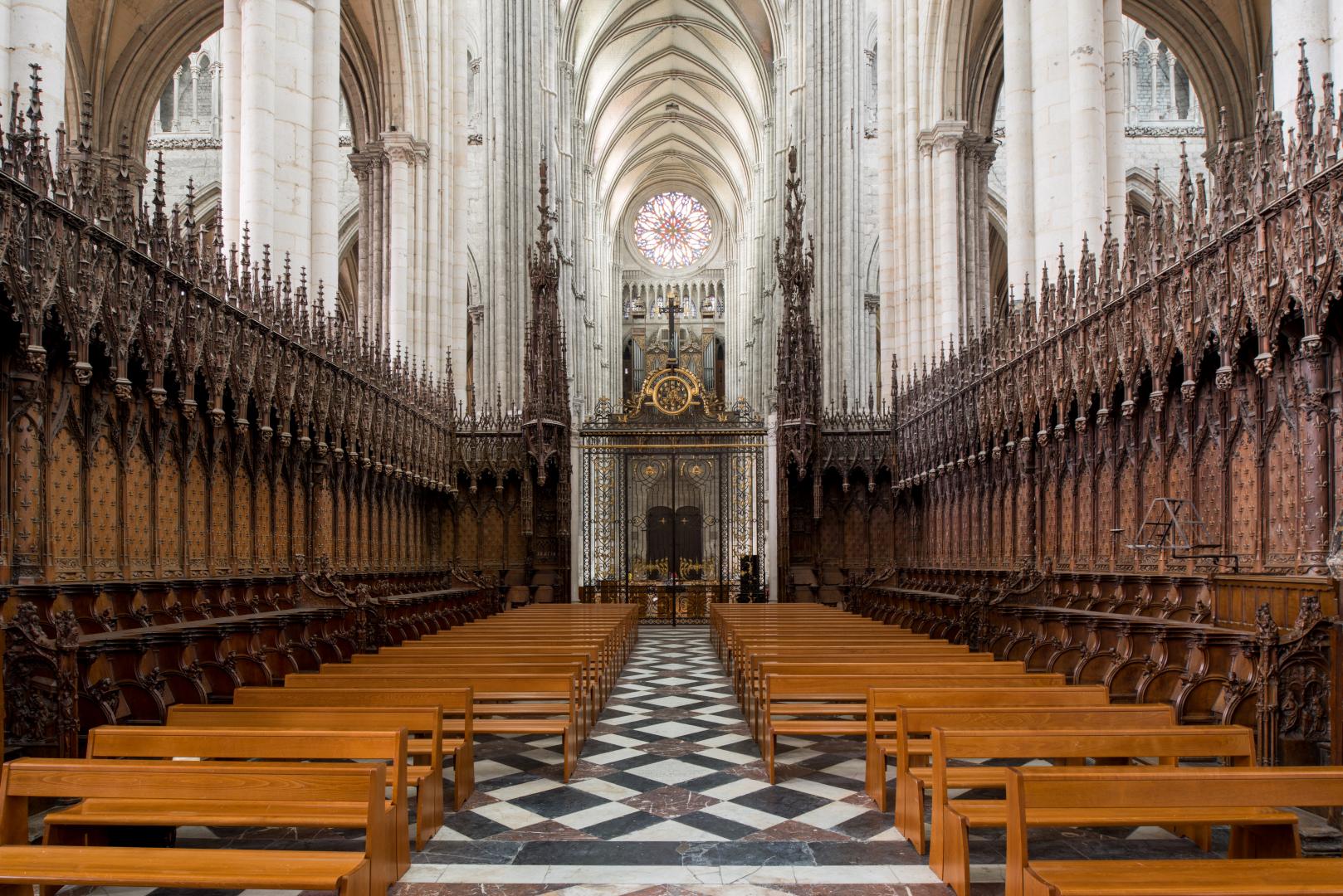
Created between 1508 and 1521, the sumptuously-decorated choir stalls carry an unusually rich program of figurative sculpture. Carved in oak by local artisans, the sculptures adorn the stalls where the regular clergy, or canons, once held their office.
Some forty canons sat in the upper seats while the lower seats were occupied by chaplains, vicars, choirboys and, on special occasions, visiting clergy. The total assembly might number over one hundred on feast days.
Click on the questions below to discover more about the choir stalls, their stories, and how to use this website to discover these extraordinary works of art.
What are misericords, ramps, and pendentives?
What do the sculptures depict?
What are choir stalls?
Choir stalls (from Latin, installere) are seats designed for the regular clergy, or canons, of a church. In the Middle Ages, the canons would sit in these choir stalls to perform services and celebrate feast days. This is also where musicians would perform religious pieces of music during these services.
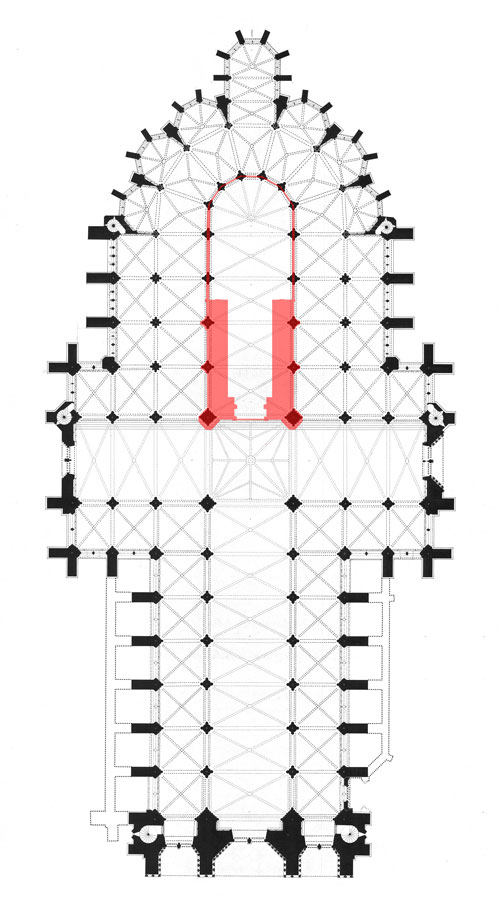
The choir stalls are located in the eastern end of the cathedral, just beyond the transept (shown here in red). Two double ranks of seats aligned with the arcade face inwards towards one another; at the west end each bank of stalls turns in an "L"-shaped configuration with special seats (stalles d'honneur) for the dean (south side) and the king (north side).
Defining parts of the choir stalls at Amiens
To better understand the imagery in the choir stalls, it is helpful to define the components of these sculptures. The website is designed to help you explore the stalls through the following categories:
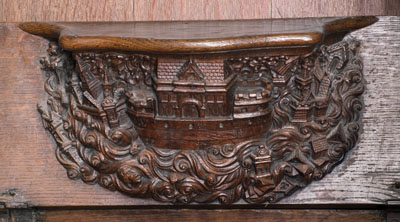
Misericords - The carefully carved brakets under seats of the choir stalls, which can be folded up and down. When folded up, the sculptures face out. The small seat on top could also be used by the canons while they were standing to lend support during the long services. Uniquely, the Amiens misericords depict scenes from the Old Testament. Other misericords in Europe often depict profane or secular imagery.
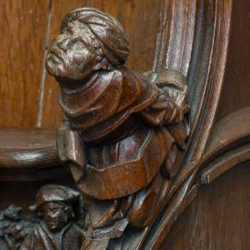
Handrests - The handrests are located between each seat and depict characters from secular life. Artisans, fools, musicians, and readers are among the types of figures depicted.
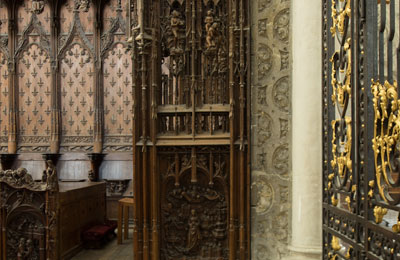
Reliefs - The relief panels are located at the entrance, along stairways, and at the eastern end of the choir stall enclosure. Some reliefs are located in the same location and stacked on top of one another, or composed side-by-side.
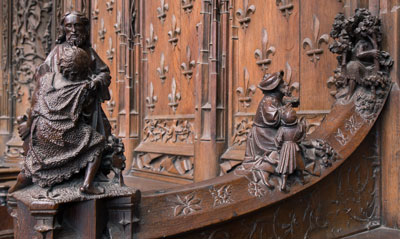
Ramps - Like banisters, these complex sculptures adorn the upper regions of the stairways, transitionary spaces, and on the outside of the priveleged seats of the choir stall, the Dean's Seat and the King's Seat. They contain many figures and relate to key biblical texts.
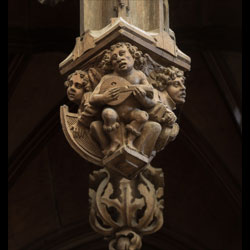
Pendentives - These rich, ornate sculptures hang from the carved wooden "vaults" of the choir stall enclosure. They alternate foliate, plant forms with profane characters.
How do you use this tool?
Use the buttons at the top of the Choir Stall map to navigate between Misericords, Hand Rests, and other components of the choir sculpture.

In the zoomable map, hover over the colored shapes to explore the different sculptures. Click to investigate further and see a high-resolution, zoomable picture. From here, you can either navigate back to the map or page through all sculptures of a certain type.
Alternately, you can click "Launch Tour" for each component (Misericords, Handrests, Reliefs, etc.) to page through each image and read texts related to each sculpture.
What do the sculptures depict?
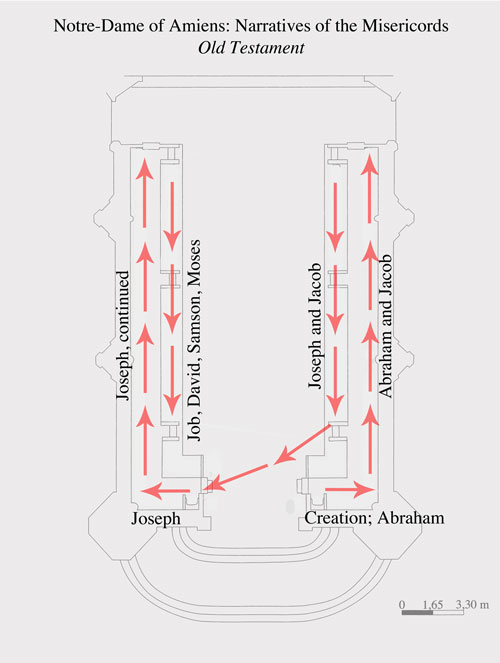
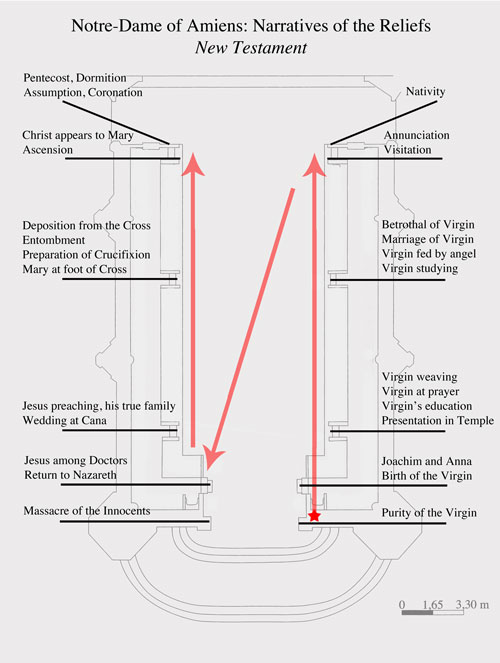
The misericords take us on a breath-taking passage from Creation to the life of David.
The staircase ramps with their free-standing figures provide the narrative crescendos for this story.
The relief panels on the south side depict the life and purity of the Virgin Mary, while on the north side they tell the story of the life and Crucifixion of Christ reaching a crescendo with the Coronation of the Virgin at the east end.
The handrests are populated by the people of Amiens including the artisans of the cathedral.
The pendentives carry exquisite foliate forms and compelling profane images, some quite provocative.
Bibliography
Coming soon.